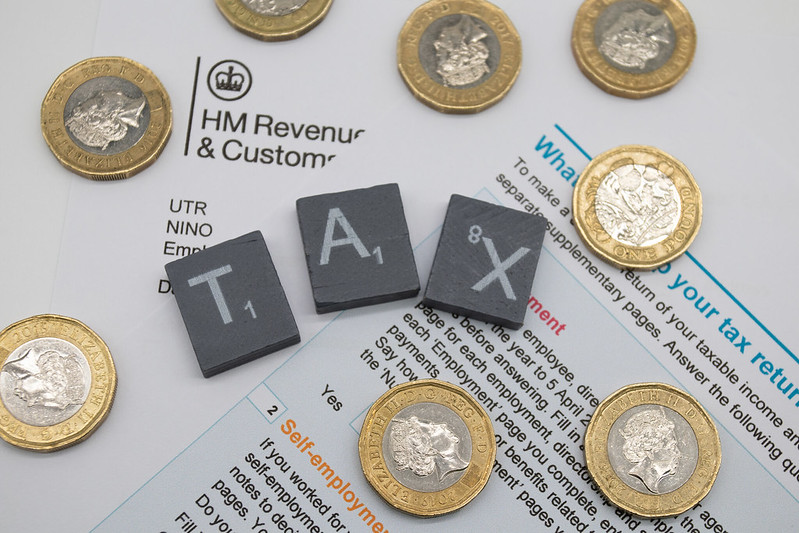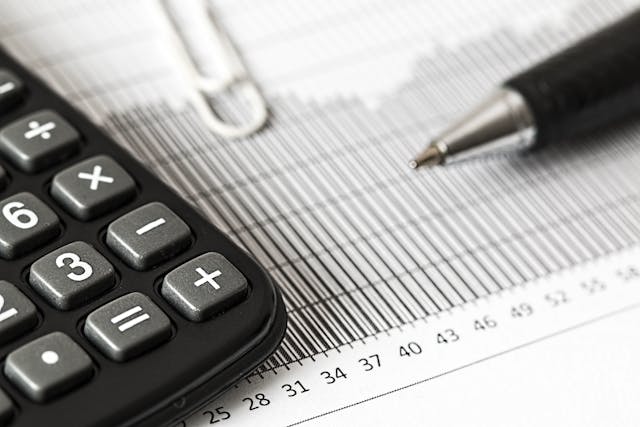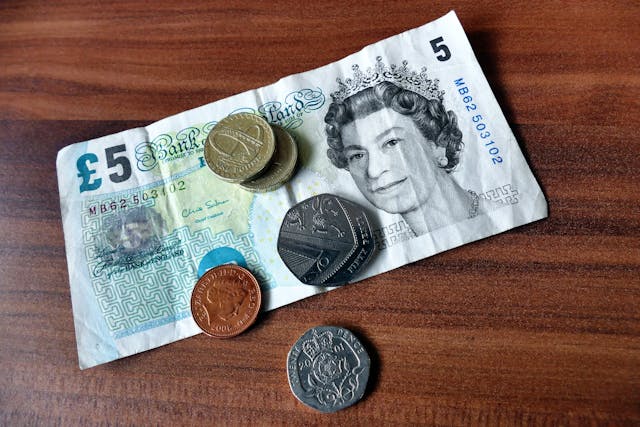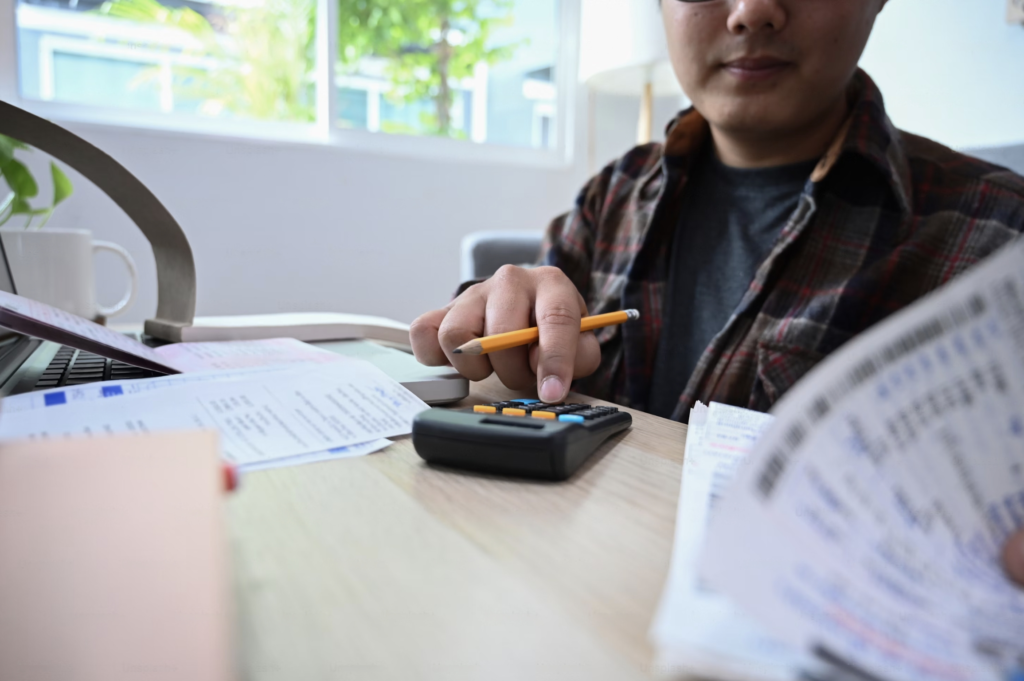How Much is VAT in UK: A Clear Guide to Value Added Tax Rates
Value Added Tax (VAT) is a tax levied on goods and services in the United Kingdom (UK). It is an indirect tax that is paid by the final consumer, but collected and remitted to the government by businesses. VAT is a complex tax that can be difficult to understand, especially for those who are new to the UK tax system. In this article, we will provide an overview of how much VAT is in the UK and the different aspects that businesses and consumers need to know.
Understanding VAT in the UK is essential for businesses that operate in the country. VAT is a tax that is added to the price of goods and services, and it is charged at different rates depending on the type of product or service. The standard rate of VAT in the UK is 20%, but there are also reduced rates of 5% and 0% that apply to certain products and services. Some goods and services are exempt from VAT, and businesses that provide these products or services cannot charge VAT on them.
Current VAT Rates are determined by the government and can change from time to time. It is important for businesses to stay up-to-date with the latest VAT rates to ensure that they are charging the correct amount of tax. In the following sections, we will explore VAT registration, calculating and charging VAT, VAT returns and payments, and other important aspects of VAT in the UK.
Key Takeaways
- VAT is a tax levied on goods and services in the UK, and it is paid by the final consumer but collected and remitted to the government by businesses.
- The standard rate of VAT in the UK is 20%, but there are also reduced rates of 5% and 0% that apply to certain products and services.
- Businesses need to understand VAT registration, calculating and charging VAT, and VAT returns and payments to comply with UK tax laws.

Understanding How Much is VAT in UK
VAT, or Value Added Tax, is a consumption tax that is applied to most goods and services in the UK. It is a tax that is paid by the consumer, but collected and remitted to the government by businesses.
Definition of VAT
VAT is a tax that is added to the price of goods and services at each stage of production and distribution. This tax is based on the value added at each stage of production and distribution, hence the name Value Added Tax. The standard rate of VAT in the UK is currently 20%, but there are also reduced rates of 5% and 0% for certain goods and services.
History of VAT
VAT was first introduced in the UK in 1973, replacing the previous Purchase Tax. The introduction of VAT was part of the UK’s accession to the European Economic Community (EEC), which required member states to adopt a common system of VAT.
Since then, VAT has become an important source of revenue for the UK government, accounting for around 20% of all tax revenue. The EU sets the minimum rate for VAT, but member states are free to set their own rates above this minimum.
In recent years, there has been some debate about the future of VAT in the UK, particularly in light of Brexit. However, for the time being, VAT remains an important part of the UK tax system.
Current VAT Rates in the UK
Value Added Tax (VAT) is a tax on goods and services in the United Kingdom. The current standard rate of VAT in the UK is 20%, which is charged on most goods and services.
Standard Rate of VAT
The standard rate of VAT is the default rate that applies to most goods and services in the UK. This rate is currently set at 20% and applies to a wide range of items including electronics, clothing, and household goods.
Reduced Rate of VAT
Certain goods and services are eligible for a reduced rate of VAT, which is currently set at 5%. This reduced rate applies to items such as home energy, children’s car seats, and sanitary products.
Zero-Rated Items
Some goods and services are zero-rated, which means that they are not subject to VAT. Zero-rated items include basic food items, books, newspapers, and motorcycle helmets.
Exempt Goods and Services
Exempt goods and services are not subject to VAT. However, unlike zero-rated items, businesses cannot claim back the VAT on exempt goods and services. Examples of exempt items include financial services and postage stamps.
It is important to note that businesses must charge the correct rate of VAT on their goods and services. Failure to do so can result in penalties and fines. Therefore, it is essential that businesses keep up to date with the current VAT rates and charge the correct amount of VAT on their products and services.
VAT Registration
VAT registration is mandatory for businesses in the UK that have a taxable turnover above the VAT registration threshold. This means that businesses must register for VAT with HMRC if their taxable turnover exceeds the threshold, which is currently £85,000.

VAT Registration Threshold
The VAT registration threshold is the level of taxable turnover at which businesses must register for VAT. The current threshold is £85,000, which means that businesses with a taxable turnover of £85,000 or more must register for VAT. If a business’s taxable turnover is below the threshold, it can choose to register voluntarily.
Process of VAT Registration
The process of VAT registration involves completing an online application form on the HMRC website. Businesses will need to provide details such as their VAT number, turnover, and business activities. Once the application has been submitted, HMRC will review it and issue a VAT registration number if the business meets the requirements.
VAT-registered businesses must charge VAT on their goods and services and submit regular VAT returns to HMRC. They must also keep accurate records of all VAT transactions.
In summary, businesses in the UK must register for VAT if their taxable turnover exceeds the VAT registration threshold. The process of VAT registration involves completing an online application form on the HMRC website. Once registered, businesses must charge VAT on their goods and services and submit regular VAT returns to HMRC.
Calculating and Charging VAT
When it comes to calculating and charging VAT in the UK, there are several important factors to consider. In this section, we will explore how to calculate VAT, how to issue a VAT invoice, and how VAT applies to international trade.
How to Calculate VAT
The standard rate of VAT in the UK is currently 20%, although there are also reduced rates of 5% and 0% that apply to certain goods and services. To calculate the amount of VAT to charge on a sale, the VAT rate is applied to the total cost of the goods or services.
For example, if a business sells a product for £100, they would need to add VAT at a rate of 20%, making the total cost to the customer £120. The VAT charged on the sale would be £20, which is the difference between the selling price and the original cost of the product.
To simplify the process of calculating VAT, businesses can use a VAT calculator or accounting software that automatically adds VAT to the price of goods or services.

Issuing a VAT Invoice
When a business makes a sale that includes VAT, they are required to issue a VAT invoice to the customer. This invoice must include certain information, such as the business’s VAT registration number, the amount of VAT charged, and the total cost of the goods or services.
In addition, businesses must keep records of all VAT invoices issued and received, as well as records of their output tax (VAT charged on sales) and input tax (VAT paid on purchases).
VAT on International Trade
When it comes to international trade, VAT can be a complex issue. In general, businesses that export goods or services outside of the EU are not required to charge VAT on those sales. However, businesses that import goods or services from outside of the EU may be required to pay VAT on those purchases.
In addition, businesses that sell goods or services to customers within the EU may be required to register for VAT in other EU countries, depending on the value of their sales in those countries.
Overall, calculating and charging VAT in the UK requires careful attention to detail and compliance with relevant regulations. By following best practices and using tools such as VAT calculators and accounting software, businesses can ensure that they are accurately calculating and charging VAT on their sales.
VAT Returns and Payments
Filing a VAT Return
Tax-registered businesses in the UK are required to file VAT returns with HMRC. The VAT return summarizes the business’s output tax and input VAT for a given accounting period. The accounting period can be monthly, quarterly, or annually, depending on the size of the business.
To file a VAT return, the business must use HMRC’s online service or compatible software. The VAT return must be submitted and paid by the deadline, which is usually one month and seven days after the end of the accounting period. Failure to file or pay on time can result in penalties and interest charges.
Paying VAT to HMRC
When a business files a VAT return, it must also pay any VAT due to HMRC. The amount due is the difference between the output tax and input VAT for the accounting period. Output tax is the VAT charged on sales, while input VAT is the VAT paid on purchases.
The payment can be made electronically through HMRC’s online service or by direct debit. The deadline for payment is the same as the deadline for filing the VAT return. If the payment is not made on time, the business may face penalties and interest charges.
If the business’s input VAT exceeds its output tax, it can reclaim the difference from HMRC. The reclaim can be made on the VAT return or separately through HMRC’s online service. The reclaim will be paid to the business by HMRC within a certain timeframe.
Overall, businesses must ensure that they file their VAT returns and pay any VAT due on time to avoid penalties and interest charges. They should also keep accurate records of their output tax and input VAT to ensure that they can reclaim any VAT owed to them.
VAT Relief and Special Schemes
VAT Relief for Specific Goods
There are certain goods and services that are eligible for VAT relief or reduced rates. For example, children’s clothing and footwear, books, newspapers, and magazines are charged at a reduced rate of 5%. This is to make these essential items more affordable for consumers.
In addition, some goods and services are exempt from VAT altogether. These include healthcare services, financial and insurance services, and certain types of education and training.
Flat Rate VAT Scheme
The Flat Rate VAT Scheme is a simplified way for small businesses to calculate their VAT liability. Under this scheme, businesses pay a fixed percentage of their gross turnover to HMRC as VAT, rather than calculating the difference between VAT charged and VAT paid on purchases.
The percentage varies depending on the type of business, but it is generally lower than the standard VAT rate. This scheme can be beneficial for businesses with low costs and a high turnover, as they may end up paying less VAT than under the standard scheme.
It is important to note that businesses using the Flat Rate VAT Scheme cannot reclaim VAT on their purchases, with the exception of certain capital assets over £2,000.
Overall, VAT relief and special schemes can be beneficial for businesses and consumers alike. It is important to understand the eligibility criteria and rules for each scheme to ensure compliance with VAT regulations.
Impacts on Businesses
Effect of VAT on Business Cash Flow
One of the most significant impacts of Value Added Tax (VAT) on businesses in the UK is its effect on cash flow. Businesses are required to pay VAT on their sales, which they collect from their customers. However, they can only claim back VAT on their purchases, which is known as input tax. This means that businesses have to pay the difference between the VAT they collect and the VAT they pay to HM Revenue and Customs (HMRC) on a regular basis.
This can cause cash flow problems for businesses, especially those that have a long gap between paying their suppliers and receiving payment from their customers. They may have to borrow money to cover the VAT payments, which can increase their costs and reduce their profitability.

VAT and Business Pricing Strategies
VAT can also have an impact on business pricing strategies. Businesses have to decide whether to include VAT in the price of their goods and services or add it on top. Including VAT in the price can make the price seem higher, but it can also simplify the pricing process for customers. Adding it on top can make the price seem lower, but it can also create confusion for customers.
Businesses that sell goods or services that are exempt from VAT or zero-rated may also face challenges in setting their prices. Exempt goods and services cannot have VAT added to their price, while zero-rated goods and services have a VAT rate of 0%. This means that businesses cannot claim back the VAT they pay on their purchases, which can increase their costs.
In summary, VAT can have a significant impact on the cash flow and pricing strategies of businesses in the UK. It is important for businesses to understand the VAT rates and rules that apply to their goods and services, as well as their input tax and output tax obligations.
Legal and Policy Considerations
VAT Legislation
Value Added Tax (VAT) is a tax that is charged on most goods and services in the United Kingdom (UK). The VAT legislation in the UK is governed by the Value Added Tax Act 1994 and the Value Added Tax Regulations 1995. These laws outline the rules and regulations for the collection, payment, and administration of VAT.
The VAT rate in the UK is set by the Chancellor of the Exchequer in the annual budget. The current standard rate of VAT in the UK is 20%, which is the rate charged on most goods and services. However, there are some goods and services that are exempt from VAT, such as education, healthcare, and financial services.
Changes in VAT Policy
The UK government has made several changes to the VAT policy over the years. In 2008, the government reduced the VAT rate from 17.5% to 15% as part of an emergency budget to stimulate the economy during the financial crisis. In 2010, the VAT rate was increased back to 17.5%.
In 2011, the Chancellor announced a new VAT policy called the “VAT Grouping” which allowed companies to form a single VAT group for tax purposes. This policy was introduced to simplify the VAT system for businesses.
In 2020, the UK government announced several changes to the VAT policy in response to the coronavirus pandemic. These changes included a temporary reduction in the VAT rate for the hospitality and tourism sectors from 20% to 5% until March 2021. The government also introduced a VAT deferral scheme to help businesses affected by the pandemic to defer their VAT payments.
The HM Revenue and Customs (HMRC) is responsible for the administration and collection of VAT in the UK. The EU also plays a role in the VAT policy in the UK as the UK was a member of the EU until 2020. However, the UK government has now left the EU and has introduced new VAT rules for businesses trading with the EU.
In conclusion, the VAT legislation in the UK is governed by the Value Added Tax Act 1994 and the Value Added Tax Regulations 1995. The UK government has made several changes to the VAT policy over the years, and the HMRC is responsible for the administration and collection of VAT in the UK.

Regional Variations in the UK
VAT rates in the UK are not uniform across all regions. There are some variations that exist depending on the location. The following subsections will explore some of the regional variations in the UK.
VAT in Scotland
Scotland has its own tax authority, the Scottish Revenue Authority (SRA), which is responsible for collecting VAT. The standard VAT rate in Scotland is the same as in the rest of the UK, which is currently set at 20%. However, the SRA has the power to set different VAT rates for specific goods and services in Scotland.
For example, in Scotland, the VAT rate on domestic fuel and power is set at 5%, which is lower than the standard rate. This lower rate is intended to help offset the higher energy costs that are typically experienced in Scotland due to its colder climate.
In addition, Scotland has a unique tax known as the Scottish Landfill Tax, which is a tax on waste disposal. This tax is separate from VAT and is set by the Scottish government.
Overall, while Scotland generally follows the same VAT rules as the rest of the UK, there are some specific variations that exist due to the unique circumstances of the region.
Frequently Asked Questions
What is the standard VAT rate in the UK for 2024?
The standard VAT rate in the UK for 2024 is 20%. This rate applies to most goods and services, including imports from outside the European Union.
How can I calculate VAT in the UK?
To calculate VAT in the UK, you can use the following formula:
VAT = (Net Price x VAT Rate) / 100
The net price is the price of the goods or services before VAT is added, and the VAT rate is the percentage of VAT that applies to the goods or services.
Are there different VAT rates for various goods and services in the UK?
Yes, there are different VAT rates for various goods and services in the UK. Some goods and services are exempt from VAT, while others are subject to reduced rates of VAT. For example, the reduced rate of VAT applies to certain goods and services, such as domestic fuel and power, and children’s car seats.
Is there a VAT refund system for tourists visiting the UK?
Yes, there is a VAT refund system for tourists visiting the UK. If you are a non-EU resident, you can claim a refund of VAT on goods you have bought in the UK and are taking out of the country. To be eligible for a refund, you must meet certain conditions, such as spending a minimum amount on goods and presenting the goods and receipts to a customs officer at the point of departure.
What items are exempt from VAT in the UK?
Some items are exempt from VAT in the UK, such as most food and drink, books and newspapers, and children’s clothes and shoes. There are also some goods and services that are zero-rated for VAT, such as exports to non-EU countries and some medical equipment.
How has the VAT rate in the UK changed over time?
The VAT rate in the UK has changed over time. It was first introduced in 1973 at a rate of 10%. Since then, it has been increased several times, and it is currently set at 20%. However, there have also been some temporary reductions in the VAT rate, such as during the COVID-19 pandemic, when the rate was reduced to 5% for certain goods and services.




